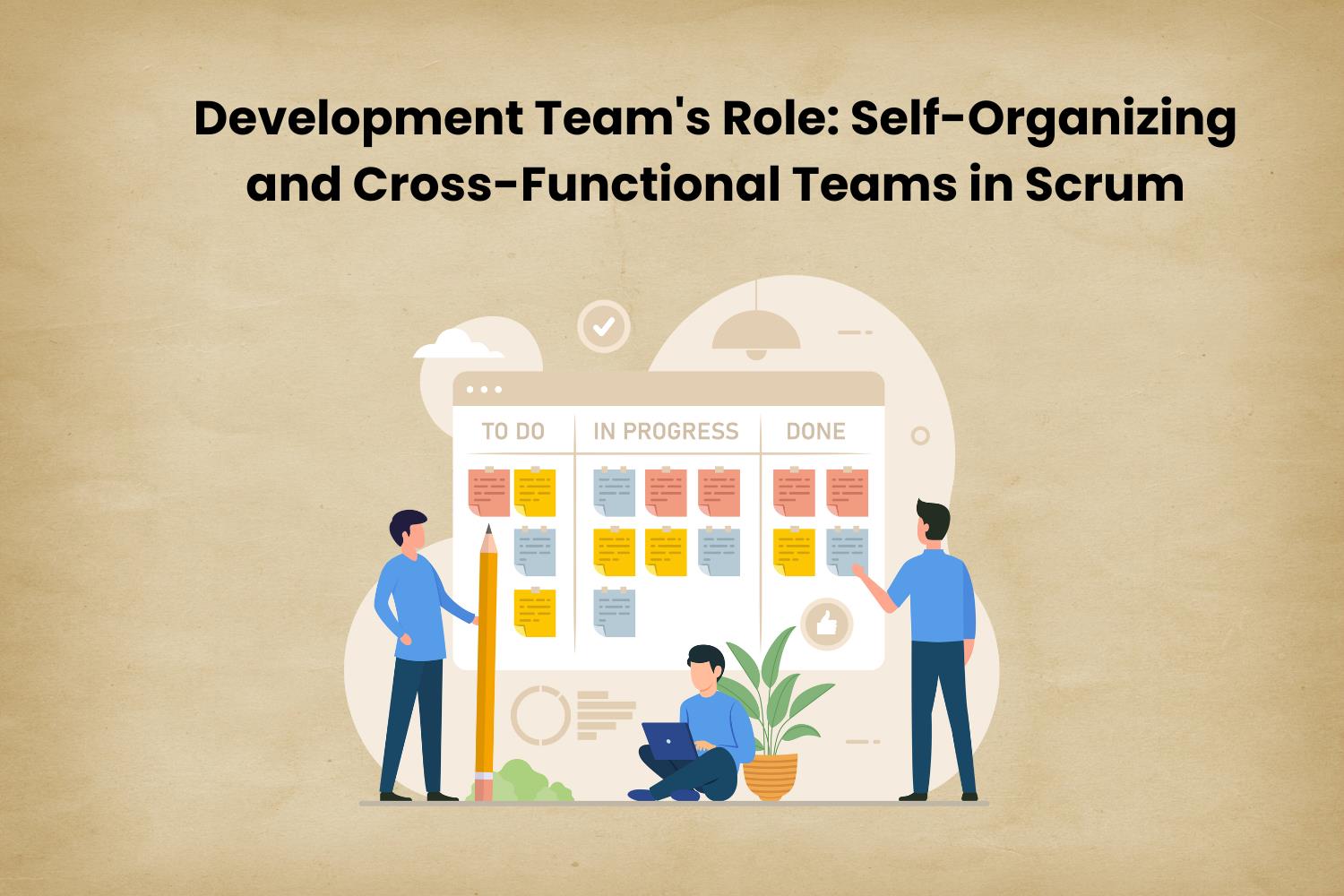In the Scrum framework, the development team plays a crucial role in delivering high-quality products incrementally. Scrum emphasizes the principles of self-organization and cross-functionality within development teams, enabling them to efficiently collaborate and adapt to changing requirements. In this blog we explore the significance of self-organizing and cross-functional teams in Scrum, highlighting their roles, benefits, and impact on project success. Additionally, we’ll touch upon the relevance of Scrum Certification and provide an overview of the Scrum Methodology.
Understanding Scrum Methodology
Scrum is an Agile project management methodology applicable to many sectors and mainly utilised in the software development industry. It offers a flexible and iterative method of developing new products, emphasizing cooperation, adaptation, and ongoing progress. The development team is a key element of the Scrum framework, based on roles, events, artefacts, and rules that direct the development process.
The Role of the Development Team in Scrum
After each sprint in Scrum, the development team is in charge of providing potentially shippable pieces of product features. The development team is cross-functional, meaning it has all the capabilities required to deliver the product increment, and self-organising means it has the freedom to decide how to complete the task. This allows the group to consistently produce value and promptly adjust to shifting needs.
Characteristics of Self-Organizing Teams
Teams that self-organise can choose how best to carry out their tasks. They have the independence to set up their workflow, cooperate well with others, and arrange themselves around assignments. Self-organising teams are dedicated to accomplishing their objectives and are driven by a common sense of purpose. Team members’ creativity, inventiveness, and sense of ownership are encouraged by this autonomy, which raises engagement and productivity levels.
Benefits of Cross-Functional Teams
Because they are made up of individuals with various backgrounds and specialities, cross-functional teams can handle various tasks without the assistance of outside resources. Because of this range of expertise, cross-functional teams can better adjust and respond to shifting project requirements. With everyone on the team possessing the right abilities, they can work independently and produce excellent work quickly.
Impact on Project Success
Project success is significantly impacted by Scrum teams’ self-organising and cross-functional structure. Scrum encourages a sense of accountability and ownership among team members by allowing them to decide for themselves and control their work. Higher motivation, output, and satisfaction levels follow, eventually improving the project’s results.
The Role of Scrum Certification in Understanding Team Roles
Programmes for Scrum Certification are essential for assisting professionals in comprehending the roles and duties of members of Scrum teams. Comprehensive instruction on Scrum techniques, principles, and methodologies—including the responsibilities of the development team, Scrum Master, and Product Owner—is offered by these programmes. Professionals can demonstrate their proficiency with Scrum and improve their capacity to contribute to Scrum teams by earning Scrum Certification.
Best Practices for Self-Organizing Teams in Scrum
Scrum technique relies heavily on self-organising teams, but a few best practices must be followed to ensure that they work well. The main best practices for encouraging self-organisation in Scrum teams will be covered in this part. These practices include setting clear objectives and boundaries, encouraging candid communication and teamwork, giving team members decision-making authority, and offering assistance and resources as required. Organisations may foster an environment where self-organising teams flourish and contribute to project success by adhering to these best practices.
Achieving Cross-Functionality in Scrum Teams
Scrum teams cannot provide entire increments of product functionality unless they are cross-functional. This section will provide an in-depth discussion of the Scrum concept of cross-functionality. Teams can accomplish cross-functionality by ensuring all required skills are present, encouraging a culture of knowledge sharing and learning, and pushing team members to learn skills outside their core competencies. By attaining cross-functionality, Scrum teams can enhance their ability to deliver value and adjust to evolving project requirements.
Also Read: How to retake the Scrum Master Certification exam?
Conclusion
A key component of Scrum projects’ success is the development team. Scrum teams can produce high-quality products incrementally, respond rapidly to changing needs, and complete projects by adhering to self-organisation and cross-functionality. Scrum Certification programmes are invaluable for companies wishing to use Scrum methodology because they equip workers with the information and abilities needed to comprehend and carry out their duties within Scrum teams.











